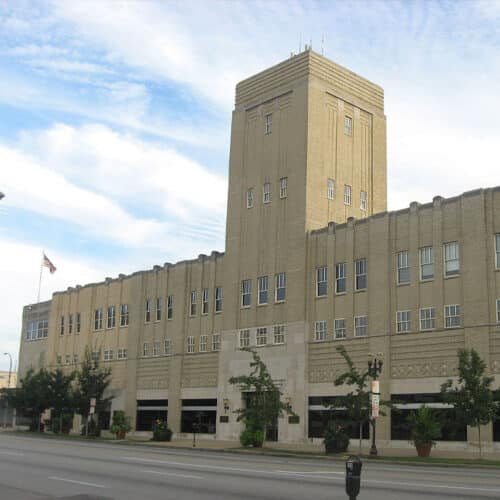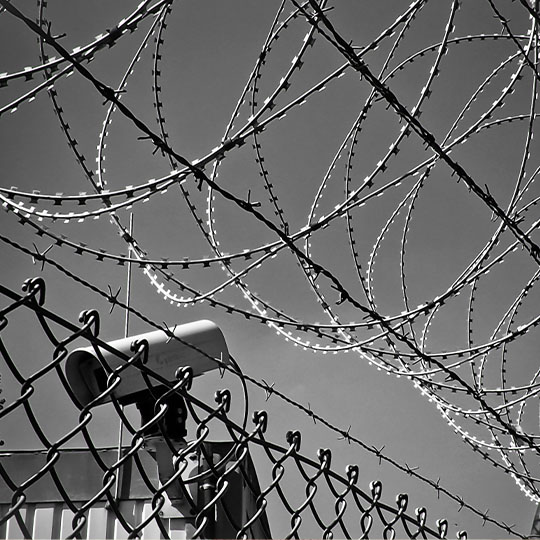Case Study
Louisville Gas & Electric
Project Overview
Location
Louisville, Kentucky
Building
LG&E Building Operations Center
Aeroseal Contractors
Critical Environmental Solutions
Contract Engineer
Luckett & Farley
Goal
Reduce duct leakage to improve airflow and ventilation – eliminating uneven, uncomfortable temperatures being experienced throughout the facility.
Before Aeroseal
7,011 CFM total leakage (across eight different ductwork segments)
After Aeroseal
892 CFM total leakage
Results
88% average leakage reduction for each segment, allowing the HVAC to be properly balanced and the project to be completed
Type: Corporate
Louisville Gas & Electric Brings Old Ducts Up to New Codes With Aeroseal
Duct Sealing Improves Airflow and Occupant Comfort Using Existing Ductwork
The Louisville Gas and Electric Company (LG&E) relies on several locations to serve their nearly 750,000 customers across 16 counties, including an operations center located in downtown Louisville. This location includes a nearly 100-year-old main building, as well as a smaller annex. And when LG&E employees found the annex uncomfortable due to uneven temperatures, the utility acted quickly.
"The larger remodeling project was in direct response to staff complaints regarding comfort,” said LG&E project manager, Sarah Young. “We could never regulate or balance the air temperature. The HVAC system would run constantly, year-round, trying to achieve temperature settings.”
In addition to making the building comfortable, I’m happy to know Aeroseal duct sealing helps stop the pollen, dust and other contaminants from circulating throughout the office. The solution has improved HVAC efficiency and filtration.
Sarah Young
Project Manager
- LG&E
Duct Leaks Make HVAC System Impossible to Balance
As the remodeling project was almost complete, the general contractor, Abel Construction, learned the annex’ HVAC system would still not balance. Upon further investigation, project architect Luckett & Farley quickly realized leaky ductwork was causing the issue.“The existing metal ducts are in concealed, inaccessible spots or in locations that are dangerous to access,” said Mike Moll, Luckett & Farley’s mechanical engineering discipline manager. “Traditional, manual duct sealing or duct replacement would require great effort and expense. Neither approach was a viable option.”
Luckett & Farley worked with Critical Environmental Solutions (CES) and its owner, Bob Soffel, to use Aeroseal duct sealing technology to solve the problem.
Aeroseal — a Non-Invasive, Safe Solution
Aeroseal is a proven effective technology that injects a fog of aerosolized sealant particles into pressurized ductwork to seal air leaks from the inside. Sealant particles accumulate only where the leaks are located, gradually closing the leak. This ensures inaccessible ductwork can be sealed without having to tear open walls in the building.The sealant is safe, water-based and non-toxic, meeting the latest LEED standards from the USGBC. It has an extremely low concentration of VOC’s, during sealing time only, and no OSHA maximum exposure limit.
The Aeroseal system software continuously measures and records airflow and leakage throughout the process. So once LG&E’s ductwork reached its goal, the software verified and recorded the results. A certificate showing leakage before and after the process was issued to the general contractor for the facility’s records.

Results
CES’ Comprehensive Approach to Duct Sealing
After CES conducted an initial inspection of the LG&E facility, they identified eight different zones of ductwork needing to be addressed, leading from the main air handling unit in the basement to the building’s first floor and 32 different diffusers of varying sizes.
“A combination of ductwork was causing the leaks,” said Soffel. “This included older ductwork that had never been sealed, along with newer ductwork treated with mastic, that still leaked. Before sealing we repaired larger gaps and issues that were causing cross-over airflow, as well as letting supply airflow leak into return ductwork.”
Then, without disrupting the building’s daily operations, CES completed the sealing in less than two days and was able to reduce leakage in all eight zones by an average of 88 percent.
Based on these results, CES has already been deployed by LG&E’s sister company, Kentucky Utilities Company, fixing leaky ducts at its Lexington headquarters.
Like any local utility, LG&E complements its service with year-round energy efficiency tips and advice. Through firsthand experience, it can now add duct sealing to its lists of ways to save energy, and improve comfort with cleaner, healthier air.







